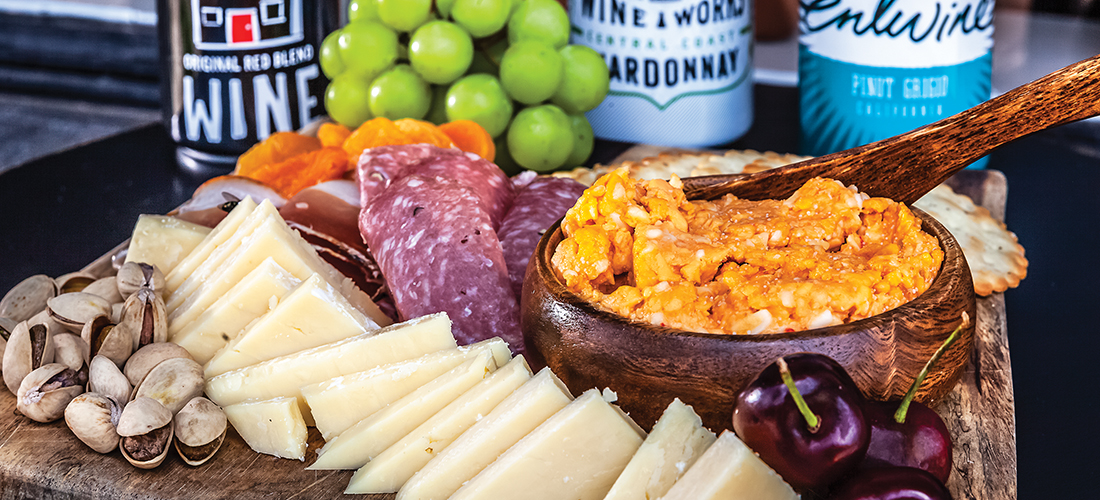How to create — or botch — a great one
By Tony Cross
After closing, I rent out the kitchen at Nature’s Own to work on prepping and batching kegged cocktails. I get ideas just walking around the store grabbing ingredients. One night as I passed the shelf of vermouths, I thought to myself, “Self, I probably need to re-up on some Dolin. Why have people been telling me about their terrible martinis lately?” Let’s talk about what you (or your bartender) are doing wrong.
The martini is the international symbol for cocktails. I just made that up. Or maybe not. What other shape — whether it’s a neon sign, printed on oven towels, or painted on a canvas at Bed, Bath & Beyond — represents an alcoholic drink that’s recognized everywhere? Everyone over 21 knows about the martini. This doesn’t mean that everyone has tried one, much less enjoyed this quintessential classic. I can certainly tell you that I did not fall in love my first go-round. Quite the opposite, actually. If memory serves, I believe all I was drinking was cold, lousy gin, in a martini glass. What a moment.
From talking to my bar guests in the past, to chatting with friends and clients, here are some tips:
Just because it’s in a martini glass doesn’t make it a martini.
I’m getting this one out of the way, because you’d think it should be self-explanatory, but . . .
What recipe?
OK, this one should be pretty obvious, but just like with other cocktails out there, a lot of bartenders (home or away) just throw it all in there and don’t look back. Unless you’re quite skilled, stick to measuring. You might think you look cool behind the bar free-pouring that loooonnnngg stream of gin (probably vodka), but you don’t. If it doesn’t taste good, your guests are ordering something else. Plus, you just poured 4 ounces of gin in an oversized martini glass, and made your server spill it all over his/her hand. Good job. Do this instead: Order some jiggers from a reputable online store (I love the Japanese style) and measure. Consistency is key, and you want your guests coming back every evening because they know that your martini is the best every single time.
What vermouth?
A majority of bars across this county (and country) have rancid vermouth on the shelf. I was recently at a local spot that I wouldn’t have guessed would do such a thing. I didn’t have the heart to say anything, but luckily my buddy did. Vermouth is fortified wine, so you have to treat it like a wine, and refrigerate it. It’ll last for months (if you’re doing it right, you’ll be running out before that’s even an issue). You can also opt for smaller bottles if you’re not making many on average. When it comes to which kind, Dolin Dry has my heart. This French vermouth has been in production since 1821 and been in my belly since I was 21. Just kidding, I was drinking Jägerbombs at 21.
Gin.
To the gin martini drinkers: Just any old gin won’t do. It’s true that we have lots of local distilleries popping up, and they’re making some fantastic stuff, but for a martini, for me, it’s got to be Plymouth Gin. It’s so soft, with slight earthy-like undertones. I’ve never been great at describing spirits on my own, so there you go. Soft and earthy. But really, some other gins have a ton of different botanicals going on, and it’s just too much for me. Plymouth really mingles well with the vermouth. It allows both products to let each other shine. If Plymouth is not available, a London Dry will do. May I suggest Tanqueray 10?
Execution.
In the 1971 copy of Playboy’s Host & Bar Book (I am a loud and proud owner — Mom, I only read the recipes) it says, “A martini must be piercingly cold; at its best, both gin and vermouth are pre-chilled in the refrigerator, well stirred with ice and poured into a pre-chilled glass. Energetic stirring with the ice is all-important; the dilution makes the drink both smooth and palatable.” (Mario, 1971) Yes! Especially that “energetic stirring” part. I’m stealing that. The martini needs to be silky smooth and ice-freaking-cold! Just cold is not going to cut it. If you are (as the same book calls its reader) a martini man, you should always keep your gin in the fridge. Having both your gin and vermouth cold from the start is going to help propel your martini to the next level.
We already know not to use bad ice, but let’s refresh our memory really quick. Rubbish in, rubbish out. If your house water is great on its own, you shouldn’t really worry. Chances are, that’s not the case. So, get your own molds, and fill them with distilled water. Make sure that all of your ingredients go into an ice-cold mixing vessel. I prefer a mixing glass. If you’ve never used one, give it a shot. You can also try (after adding your gin and vermouth; see proportions in “Recipe”, below) to completely fill up the vessel with crushed ice. You can’t get much colder than that. You will be stirring, not shaking. If you’re having a hard time stirring correctly, there are a couple of great videos on YouTube that can guide you. I’m not ashamed to tell you that’s how I taught myself.
Recipe.
These vary slightly, but this is what I make for myself:
2 1/2 ounces Plymouth Gin
3/4 ounce Dolin Dry Vermouth
Strain into a chilled martini or coupe glass. Garnish with olive(s) or lemon peel.
Scroll up and repeat. I should note that some folks like to use a dash of orange bitters. If I do, it’s with a blend that I’ve mixed from a few different companies. Not really a game changer.
Tony Cross is a bartender who runs cocktail catering company Reverie Cocktails in Southern Pines.


